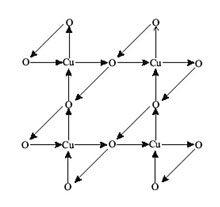RIVERSIDE, Calif., May 18, 2006 -- Seventeen years ago, a scientist at Bell Laboratories proposed the radical idea that high-temperature superconductivity occurs in certain materials because quantum-mechanical fluctuations in the materials increase as temperature decreases, the direct opposite of what usually happened. Now a French-German team of experimental scientists said it has verified the central prediction of the theory, which could one day lead to the fabrication of materials that are superconducting at room temperature.
 Scientists said validation of the theory developed by University of California, Riverside physics professor Chandra Varma could also help settle a contentious, international debate on the fundamental physics of superconductivity and emergent states of matter. The French-German team of scientists was led by Philippe Bourges of the Commissariat à l'Energie Atomique, the French atomic energy commission.
Scientists said validation of the theory developed by University of California, Riverside physics professor Chandra Varma could also help settle a contentious, international debate on the fundamental physics of superconductivity and emergent states of matter. The French-German team of scientists was led by Philippe Bourges of the Commissariat à l'Energie Atomique, the French atomic energy commission.
Superconductors are materials that conduct electricity with near-zero resistance below a specific temperature, known as the critical temperature. Superconductors are typically used in electric power transformers and magnetic resonance imaging machines. Conventional metallic superconductors must be cooled below -424 °F to become superconducting. High-temperature superconductors, which are almost always some type of cuprate (copper oxide material) ceramic doped with a variety of elements, conduct electricity with near-zero resistance at temperatures as high as -226 °F.
High-temperature superconductivity in compounds of copper, oxygen and other elements were discovered in 1986 by Swiss scientists, Georg Bednorz and Alex Müller, who were awarded the Nobel Prize in physics the following year for the discovery.
Varma's initial theory, which he proposed in 1989 when he was at Bell Laboratories (Varma worked there from 1969-2001), stated that high-temperature superconductivity and related phenomena occur in certain materials because their quantum-mechanical fluctuations increase as temperature decreases. Usually such fluctuations, which determine the properties of all matter in the universe, decrease as temperature decreases. 
A 1996 theory by UCR’s Chandra Varma notes that in copper oxide materials, superconductivity is associated with the formation of a new state of matter in which electric current loops form spontaneously, going from copper to oxygen atoms and back to copper. Recently, a French-German team of experimental scientists directly observed the current loops. (Graphic: C. Varma)
Varma's theory did not explain the nature of the fluctuations; he accomplished this in a theory he proposed in 1996, in which he noted that in cuprates, superconductivity is associated with the formation of a new state of matter in which electric current loops form spontaneously, going from copper to oxygen atoms and back to copper. His theory concluded that the quantum-mechanical fluctuations are the fluctuations of these current loops. Physicists consider these fluctuations in the current loops to be fluctuations of time.
Bourges's group directly observed the current loops in experiments involving the diffraction of polarized neutrons. In these experiments a beam of neutrons changes direction as well as the direction of its magnetization in a manner that is closely related to the geometrical arrangement of the current loops inside the material in which the beam is made to pass.
"Currently, there is much debate among researchers working on superconductivity about what exactly happens in cuprates," said Varma, who joined UCR in 2003. "Further experiments of the kind by Bourges's group should help bring a consensus in the scientific community about the fundamental physics involved in cuprates."
Before Bourges's group observed the current loops Varma predicted, an experiment performed in 2002 by a group of scientists at Argonne National Laboratory and the University of Illinois, Chicago, discovered the current loops in an indirect way by using an experimental technique Varma suggested in 2000.
"The fact that two experiments came to the same conclusion with different techniques and in different cuprate compounds lends great confidence in the results," said Harry Tom, chair of the UCR physics department. "A microscopic theory of high-temperature superconductivity might also suggest ways of fabricating room-temperature superconductors, possibly with materials more amenable to industrial fabrication than the cuprates."
"While our results are exciting, our specific approach needs to be checked by another neutron group," said Bourges. "My group plans to design refined experiments to improve the data and verify the theory in more detail."
The results of Bourges's experiments appear in the May 19 issue of Physical Review Letters. For more information, visit: www.ucr.edu